“Painting with the Sea” photo art conceived in Croatia by Visnja & Marijan Anic
http://www.croatia.org/crown/articles/10111/1/8220Painting-with-the-Sea8221-photo-art-conceived-in-Croatia-by-Visnja--Marijan-Anic.html
By Nenad N. Bach and Darko Žubrinić
Published on 05/1/2011
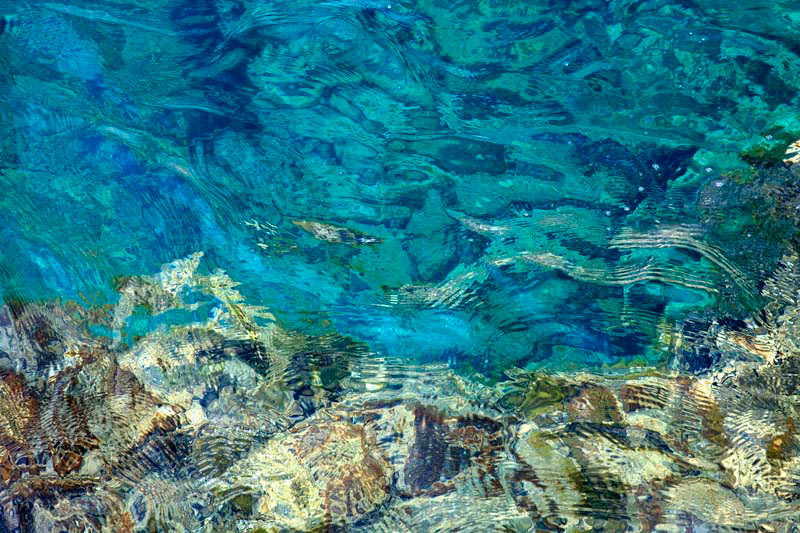
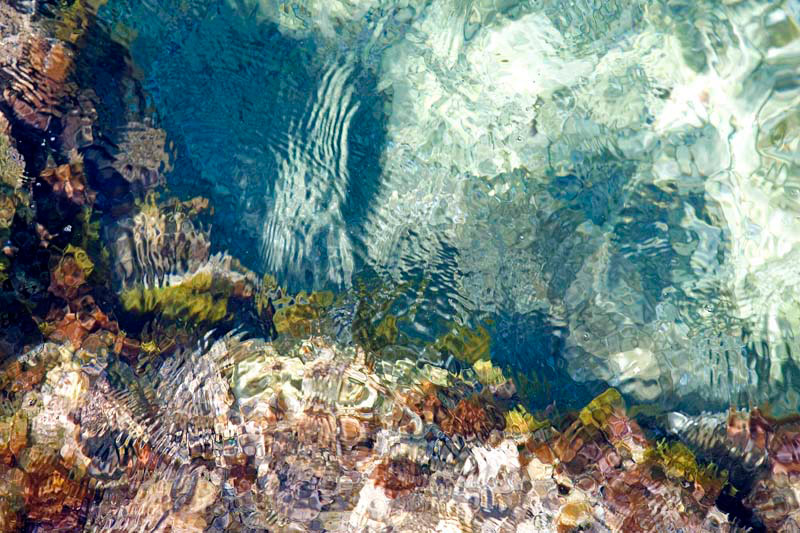
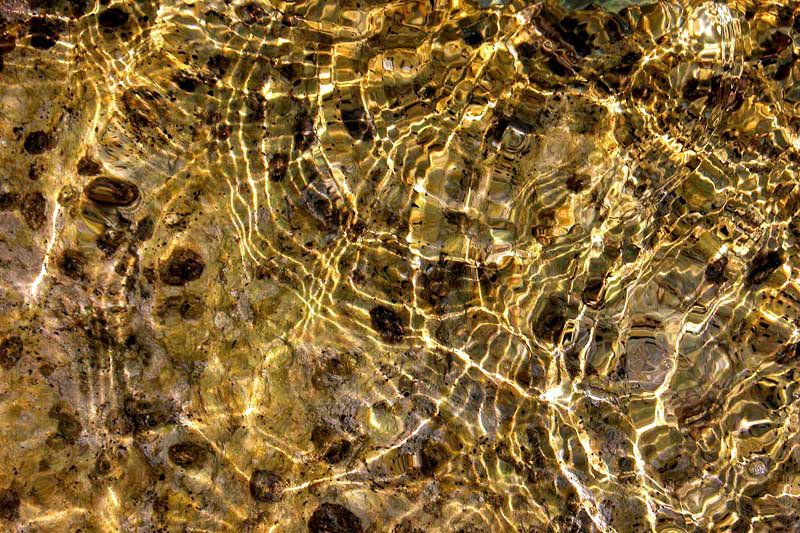
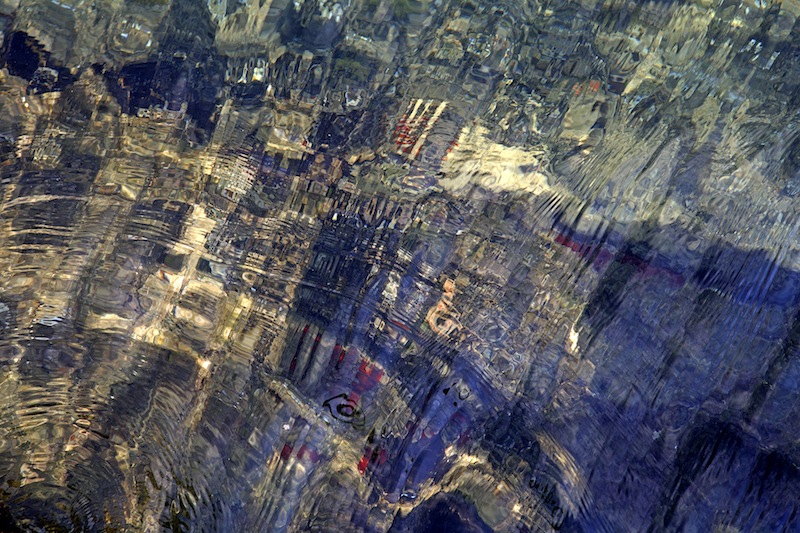
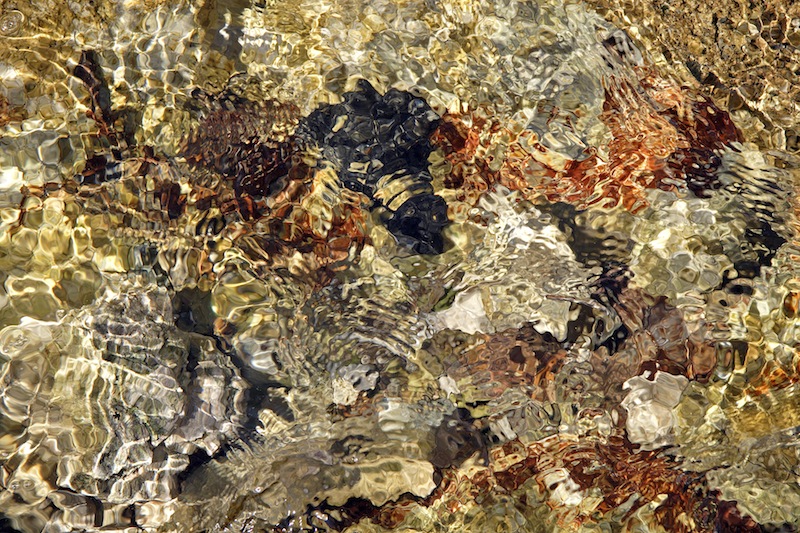
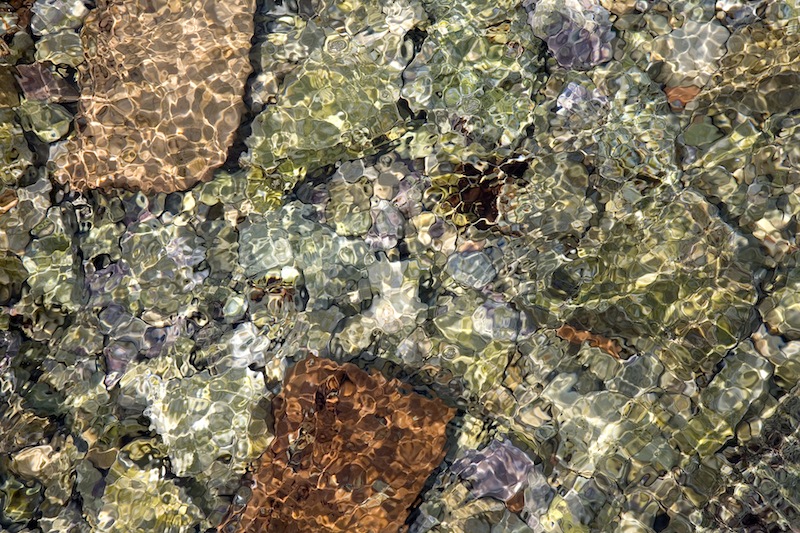
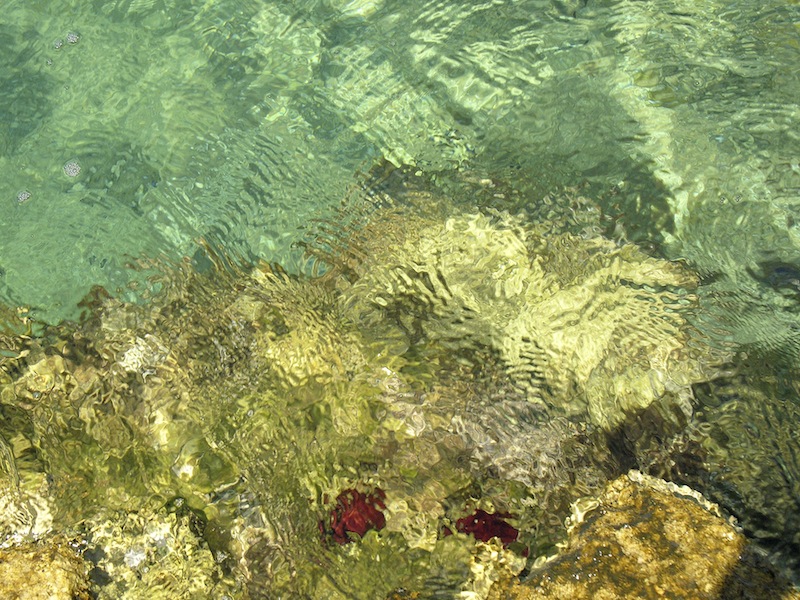
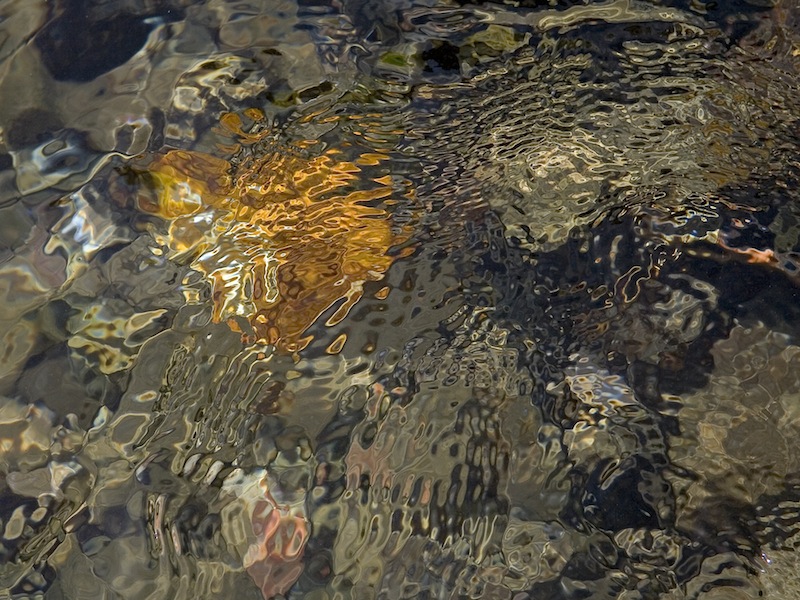
 | Višnja and Marijan Anić from Croatia's capital Zagreb concevied a new photo art based on an intricate interplay between sea surface, light and the bottom of the sea. Dazzling sceneries discover a new world of amazing shapes and colors, captured through fascinating photos. This art is the art of nature of breathtaking beauty. Croatian coast with its very clean sea and exceptionally rich archipelago is ideal place for creating real masterpieces in this art. |
Photographs of the sea bottom through waves
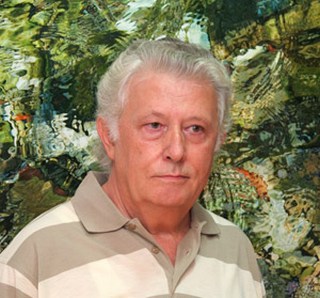 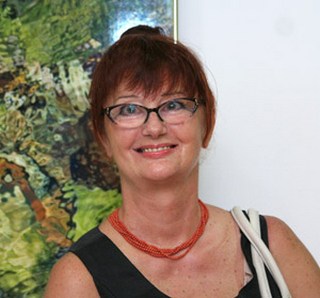 | |
Marijan and Višnja Anić from Croatia's capital Zagreb are creators of a new art "Painting with the Sea"



| Autori Sve je počelo u osamdesetima kada smo se zaljubili u Otok. Iz godine u godinu sve smo više povezivali svoju životnu priču s njegovom, njegovi su heroji postali naši, njegova skrivena mjesta naša utočišta, njegovo drveće prijatelji a njegove obale naša trajna inspiracija. Ciklus “Slikanje morem” nastao je potaknut fotografijama iz naše knjige “Brijuni kamerom zaljubljenika” (VBZ 2001). U toj je fotomonografiji pohvalne komentare dobio odlomak pod naslovom “More za draguljarnicu”, u kojem smo objavili nekoliko fotografija isječaka mora u više ili manje apstraktnom obliku. Kako smo većinu života posvetili raznim vidovima umjetnosti, obišli smo mnoge značajne europske galerije gdje smo, među ostalim, u originalu vidjeli veliki broj djela najpoznatijih autora svjetskog apstraktnog slikarstva. Kasnija orijentacija na morske apstrakcije bila nam je stoga sasvim prirodna. Nismo naravno niti slutili kakva iznenađenja nam je more pripremalo. Potaknuti pohvalama naših slučajno snimljenih apstrakcija krenuli smo u dalje istraživanje. Malo po malo, fotografirajući djeliće mora oko otoka otkrili smo da se pod određenim svjetlosnim uvjetima, pri određenoj jačini valova, boji neba, dubini vode, konfiguraciji i šarolikosti dna, te određenim postavkama ekspozicije fotoaparata, dobivaju, u najmanju ruku, iznenađujuće snimke. Od prve izložbe održane 2005. godine u Croartphoto Klubu u Zagrebu pa do zadnje izložbe u Galeriji Stančić u Zagrebu 2009. godine povećali smo format izloženih fotografija do dimenzija 114 x 76cm. Prezentirali smo fenomen većem broju povjesničara umjetnosti direktno ili putem e-maila. Osvrte nekih možete naći na ovim stranicama. Snimali smo more i na drugim otocima. Rezultati su se ponavljali. U našem je projektu svaka faza uzbudljiva na svoj način. Od procjenjivanja povoljnih vremenskih uvjeta, preko obilaženja više ili manje poznatih stijena i plaža u potrazi za obećavajućim koloritom dna, do samog snimanja. Vrlo su česta razočaranja situacijom te odustajanje od snimanja zbog prevelikih ili premalih valova, nedostatka boje, pjene ili nanosa trave u moru, i sl. Posljednja faza – pregledavanje i izbor fotografija je svakako najuzbudljivija. Tu smo i najsubjektivniji jer odlučujemo o utisku koji je najbliži pojmu idealne slike koju nosimo u sebi. Ta je faza presudna za utisak koji želimo da ljudi dobiju o tom dodatnom morskom potencijalu. Namjerno biramo fotografije koje što manje sliče (po mogućnosti uopće ne) realističnoj fotografiji vode. Zatim biramo one koje su po koloritu i oblicima što slikovitije. Podrazumijeva se da naš izbor odražava naše likovno iskustvo i naš likovni ukus. Fotografijama ne dodjeljujemo imena nego kataloške brojeve. Svjesni smo činjenice da se tu ne radi o takozvanoj umjetničkoj fotografiji nego o fotografiranju “umjetničkih djela” koje more iz sekunde u sekundu pod određenim okolnostima kreira već milijunima godina. Isto smo tako svjesni da smo samo posrednici koji uz pomoć tehničkog pomagala, u ovom slučaju fotoaparata, prenosimo uvjetno rečeno obični prirodni fenomen uobličen u formu koju će prepoznati samo publika senzibilizirana za likovne apstrakcije. Naš je interes za sam fenomen slikanja kroz valove, pa tako i za ciklus “Slikanje morem” prerastao uobičajeni životni vijek interesa autora za pojedinu temu. Postao je naša trajna fotografska preokupacija kojoj smo posvetili velik dio svoga života i energije u posljednjih desetak godina. Razlog je čist i jednoznačan: smatramo da je to fenomen koji nudi beskrajno puno dekorativnih a opet izvornoprirodnih mogućnosti. Istraživanje tih uvijek ponovno iznenadjujucih likovnih efekata uzbudljivo je i definitivno vrijedno truda. Višnja Anić Izvor www.slikanjemorem.com | Authors It all started in the eighties when we fell in love with the island. Year after year we intertwined our life story with it, its heroes became ours, its secret places our sanctuaries, its trees became friends, and its coastline, our permanent inspiration. The cycle “Painting with the Sea” came into being prompted by some photographs from our book “Brijuni through the Camera of an Admirer” (VBZ 2001). The chapter of our photo monograph entitled “The sea for jewellers”, in which we published several rather abstract photographs of the sea, was commended more than others. Since we have dedicated most of our lives to various forms of art and have visited many European galleries, we have seen, among other works, the originals of the most famous abstract painters. Therefore, we considered our subsequent move towards sea abstractions quite natural. Of course, we could not have imagined then what surprises the sea held in store for us. Encouraged by the positive reaction to our sea abstractions which were shot by chance, we embarked on comprehensive photographic research. Little by little, capturing segments of the sea around the island, we discovered that under certain light conditions, and depending on the height of the waves, the depth of the water, the configuration and the colours of the sea bottom and the optimum exposure of the camera, you get, to say the least, surprising photographs. Since the first exhibition at the Croartphoto Club in Zagreb in 2005 to the latest one in the Stančić Gallery in 2009, we have increased the format of the photos we exhibit to 114 x 76cm. We have presented the phenomenon to a great number of curators and art critics, either directly or through emails. You can find some of their reviews on these pages. We have also taken photos of the sea on other islands. The results have been similar. Each phase of our project is exciting in its own way: from assessing the weather conditions, climbing over more or less familiar rocks and exploring beaches in search of the promising colours of the sea bottom to the shooting itself. With a pilgrim’s passion, we often go to distant places which we think might be rewarding. However, we frequently have to give up any shooting due to unfavourable conditions, too large or too small waves, the absence of colour, too much foam or seaweed, not to mention frustrating reflections and shadows. The last phase – examining and choosing photographs – is certainly the most exciting. It is also the most subjective, since it is then that we decide on the impression that we consider to be the closest to the ideal abstract picture we have in ourselves. This phase is also crucial for the impression we want people to have about this additional potential of the sea. Therefore, we consciously choose the photographs which are not realistic but show the magic of colours and the structure of the “frozen” waves and the decorative distortions of the sea bottom. It goes without saying that our choice reflects our experience and taste in visual arts. We do not give names to the photographs, but catalogue numbers. Naturally, we know that our results do not belong to so-called art photography. What we do is rather record “works of art” which have been continuously created every second for millions of years, under favourable conditions, of course. We also know that we are just mediators who capture and transfer a natural phenomenon by means of a technical gadget into a form which will be recognised and accepted only by an audience sensitised to visual abstractions. Our interest in what happens when taking photographs through the waves, and consequently our cycle “Painting with the Sea”, has outgrown the span of interest photographers usually have for a particular topic. The potentials of this phenomenon have become our permanent photographic preoccupation to which we have dedicated a great part of our lives and energy in the last ten years. The reason is clear and unambiguous: we believe that it offers an endless number of decorative yet genuinely natural potentials. Exploring these ever surprising artistic effects is exciting and certainly worth all the effort. Višnja Anić Source www.paintingwiththesea.com |



| Fenomen Fenomen o kojem se ovdje radi događa se pri snimanju morskog dna kroz valove. Naime val se ponaša poput vodenog povećala kroz koje se svjetlo lomi i stvara strukturalne i kolorističke deformacije dna. U optimalnim se uvjetima na fotografijama dobivaju efekti koji podsjećaju na apstraktna likovna djela. Zbog toga smo takav način snimanja nazvali “Slikanje morem”. Ono što takvo snimanje čini posebno izazovnim jest neizvjestan rezultat. Naime trenutak likovnosti uhvaćen na snimkama nije unaprijed vidljiv zbog tromosti oka s jedne i žive aktivnosti morske površine s druge strane. Ta aktivnost je ujedno i uzrok velike raznovrsnosti rezultata koji se dobiju uzastopnim snimanjem na jednom te istom mjestu. Budući da nemamo stručnog tumačenja ovog fenomena možemo navesti samo nekoliko činjenica do kojih smo došli nakon više tisuća napravljenih snimaka. Fotografije su to uspješnije: - što je vedriji i svjetliji dan - što je sunce u višem položaju - što je dno šarolikije - što je dubina vode bliža pedeset centimetara - što je kut snimanja bliži devedeset stupnjeva u odnosu na površinu - te ako je more srednje valovito. Snimanje fotografija baziranih na tom fenomenu sastoji se od četiri osnovne faze: a) prepoznavanje adekvatnih atmosferskih i ‘morskih’ uvjeta(sunce, vjetar, valovi, čistoća i dubina mora) b) pronalaženje interesantnog segmenta morskog dna c) fotografiranje (za svaki motiv veći broj snimaka) d) pregledavanje snimljenoga na računalu te izbor najuspješnijih fotografija. Karakteristična za taj fenomen i izazove koje vidimo u njemu je činjenica da niti u jednoj od prve tri faze nemamo potpunu kontrolu nad procesom što rezultira vrlo malim brojem fotografija koje smatramo uspješnima u odnosu na veliki broj snimljenih. Svjesni smo činjenice da se tu ne radi o takozvanoj umjetničkoj fotografiji. Naše slike ustvari predstavljaju fotografirani prirodni fenomen, odnosno u trenutku uhvaćenu morsku apstrakciju koja je prostim okom neuhvatljiva. Utoliko više fascinira. Izvor www.slikanjemorem.com | Phenomenon The phenomenon we are talking about happens when you shoot photographs of the sea bottom through waves. The wave acts as a magnifying glass which breaks the light and creates structural and colouristic distortions of the sea bottom. In optimum conditions, you get special effects in the photographs which make them resemble abstract works of art. That is why we called this way of taking photos “Painting with the sea”. What makes capturing such pictures especially challenging is the result which is to a great extent unpredictable. The moment of picturesqueness captured in the photos is not seen as such on the spot. This has to do with the sluggishness of the eye on the one hand, and the vivid activity of the sea surface on the other. It is thanks to the constant water activity that we obtain a great diversity of results when consecutively taking photographs on the same spot. Since we have no expert explanation for this phenomenon, we can only mention some of the conclusions we have drawn after shooting several thousand sea abstractions. The photo sessions are more fruitful if: – the day is light and clear – the sun is high in the sky – the bottom is picturesque – the depth of the water is approximately 50 centimetres – the angle of shooting is about 90 degrees to the surface – the sea is moderately wavy. Shooting photographs in this way has four basic phases: a) recognising suitable atmospheric and maritime conditions (the sun, the wind, the waves, the cleanliness and the depth of the sea) b) finding an interesting segment of the sea bottom c) taking photos (several shots for each motif) d) browsing through the recorded material on the computer and selecting the most rewarding photographs. This phenomenon is characterised by the fact that in none of the first three phases do we have full control of the process. As a result, there is a very small number of photos we consider gratifying in comparison to the great number of shots taken. This is what makes the whole process challenging. We are aware that the results do not belong to so-called art photography. In fact, our photos represent a photographed natural phenomenon or a sea abstraction captured in a fraction of a moment which is invisible to the naked eye. All this makes these photographs even more fascinating. Source www.paintingwiththesea.com |


| Višnja Anić Rođena je u Zagrebu gdje je završila gimnaziju, te diplomirala na Filozofskom fakultetu predmete Engleski i Njemački jezik. Radila je na jednoj zagrebačkoj školi za strane jezike. Autorica je više od pedeset knjiga, slikovnica te raznih drugih publikacija pretežno pedagoškog i edukativnog karaktera. Fotografijom se povremeno bavi od fotosekcije u osnovnoj školi do danas. Marijan Anić Marijan Anić Rođen je u Zagrebu gdje je završio gimnaziju, te diplomirao na Filozofskom fakultetu u Zagrebu predmete Filozofija i Njemački jezik. Radio je kao informatičar u računskom centru jedne zagrebačke građevinske firme. Fotografijom se amaterski bavio u ranijoj mladosti pa nakon velike pauze ponovno zadnjih desetak godina. Zajedno sa suprugom koautor je fotomonografije “Brijuni kamerom zaljubljenika” objavljene 2001. Izvor www.slikanjemorem.com | Višnja Anić Višnja Anić was born in Zagreb where she attended a gymnasium and graduated in English and German from the Faculty of Humanities and Social Sciences. She worked in a large school for foreign languages in Zagreb for thirty years. She is the author of more than fifty prevalently educational books, picture books and publications. She has been interested in photography ever since she attended a photography course in primary school. Marijan Anić Marijan Anić was born in Zagreb where he attended a gymnasium and graduated in Philosophy and German from the Faculty of Humanities and Social Sciences. He worked in a computer centre of a large construction firm in Zagreb as an information scientist. He experimented with photography in his youth and after a pause reactivated his interest ten years ago. Together with his wife he co-authored the photo monograph “Brijuni through the Camera of an Admirer” in 2001. Source www.paintingwiththesea.com |
Formated for CROWN by prof.dr. Darko Žubrinić
Distributed by www.Croatia.org . This message is intended for Croatian Associations/Institutions and their Friends in Croatia and in the World. The opinions/articles expressed on this list do not reflect personal opinions of the moderator. If the reader of this message is not the intended recipient, please delete or destroy all copies of this communication and please, let us know!